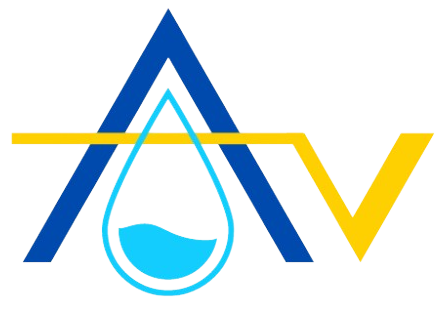Interior vs Exterior Foundation Waterproofing: What You Need?

Interior foundation waterproofing helps to manage water that has already entered the foundation by using drainage systems, using drainage systems, sump pumps, sealants, and coatings, while exterior foundation waterproofing prevents water from reaching the foundation in the first place by applying waterproof membranes and drainage solutions outside the structure.
Aqvize we highly recommend you to install exterior foundation waterproofing if it is a new or newly constructed foundation. But for the older homes, we recommend you to use interior foundation waterproofing while considering your time, money, and waterproofing efficiency. So let’s deep dive into these two methods.
What is Interior Foundation Waterproofing?
Interior foundation waterproofing is a method used to control moisture and prevent water intrusion from inside a basement or crawl space. Interior foundation waterproofing manages water that has already seeped through the foundation. Hence it is managed by drainage systems, sump pumps, crack injection methods, and waterproofing coating. At Aqviz, we rely on interior waterproofing when exterior methods aren’t feasible, such as in finished basements or homes with restricted access to the foundation walls.
These are the waterproofing methods for interior foundation waterproofing
- Install a sump pump and French drain system inside the foundation
- Inject epoxy and polyurethane on heavy foundation cracks
- Apply foundation waterproofing membranes like cementitious, liquid and sheet membranes to stop the water infiltration.
- Install crystalline waterproofing to block moisture
- Install a dehumidifier to control the humidity in the foundation.
7 Advantages of Interior Foundation Waterproofing
- Interior foundation waterproofing helps to prevent basement flooding by managing water intrusion effectively.
- Interior foundation waterproofing Works well for finished basements without major excavation.
- Increases the lifespan of foundation walls by reducing moisture damage.
- Improves indoor air quality by preventing mold and mildew growth.
- Offers cost effective solutions compared to extensive exterior waterproofing.
- Interior foundation waterproofing provides year-round protection even in areas with high groundwater levels.
- Interior foundation waterproofing enhances home value by keeping basements dry and usable.
4 Disadvantages of Interior Foundation Waterproofing
- Reduces available foundation space by requiring sump pumps, drainage systems, or wall coatings.
- Damage to flooring or walls if foundation water issues persist and are not properly managed.
- Decreases effectiveness against external hydrostatic pressure compared to exterior foundation waterproofing.
- Requires ongoing maintenance in the foundation for pumps, drainage systems, and sealants to remain effective.

What is Exterior Foundation Waterproofing?
Exterior foundation waterproofing is a proactive method that is applied outside of the foundation wall to prevent water from penetrating the foundation walls. Exterior waterproofing is most effective long-term solution for foundation waterproofing. It helps to stop water at the source before it reaches the foundation structure. This method typically involves excavating around the foundation, applying waterproof coatings or membranes, and installing drainage systems like weeping tiles to redirect water away.
These are the waterproofing methods for exterior foundation waterproofing
- Installing French drainage system around the foundation exterior
- Use bentonite clay membranes to seal cracks and gaps in the foundation surface
- Install a sheet waterproofing membrane to make a strong and continuous foundation waterproofing
- Installing an integrated drainage system, waterproofing membranes
7 Advantages of Exterior Foundation Waterproofing
- Helps to prevent water infiltration from outside the foundation by stopping moisture at the source.
- Increases foundation lifespan by protecting concrete from water damage and erosion.
- Enhances basement dryness by eliminating leaks before they reach the interior.
- Offers long-term protection with durable membranes and drainage systems.
- Works effectively for all foundation types including poured concrete, block, and stone.
- Improves structural integrity by reducing hydrostatic pressure on foundation walls.
7 Disadvantages of Exterior Foundation Waterproofing
- Reduces accessibility since it requires excavation around the foundation.
- Damages landscaping around the house due to digging and soil displacement.
- More expensive than interior foundation waterproofing.
- Requires skilled labor for proper installation of membranes and drainage systems.
- Takes longer to complete compared to interior foundation waterproofing solutions.
When you start waterproofing DIY or using a contractor, you should know the basic phases and path. So Aqviz experts have produced content for you called “ How to Waterproof a Foundation ”. It includes all the details about foundation waterproofing from start to finish
Read more about: How to Waterproof Exterior Foundation Walls?

What is Recommended for Foundation Waterproofing?
At Aqviz, we always recommend a comprehensive approach to foundation waterproofing that fits your specific needs. The best foundation waterproofing membrane depends on factors like soil conditions, water table levels, foundation type, foundation material , and budget.
For newly constructed homes with major water issues, exterior foundation wall waterproofing is the best long-term investment. It stops water before it reaches your foundation. It reduces the risk of structural damage. We recommend using bituminous or sheet membranes combined with proper drainage systems like weeping tiles.
For existing homes where exterior waterproofing isn’t feasible, interior foundation waterproofing is a practical solution. We suggest using liquid membranes, epoxy coatings, or sump pumps to control moisture in the foundation to prevent water damage.
For optimal protection, we recommend a hybrid system combining both interior and exterior methods. It increases durability and maximizes waterproofing efficiency. Contact us for more information. Aqviz experts can help assess your foundation and recommend the best waterproofing strategy for long lasting results.
